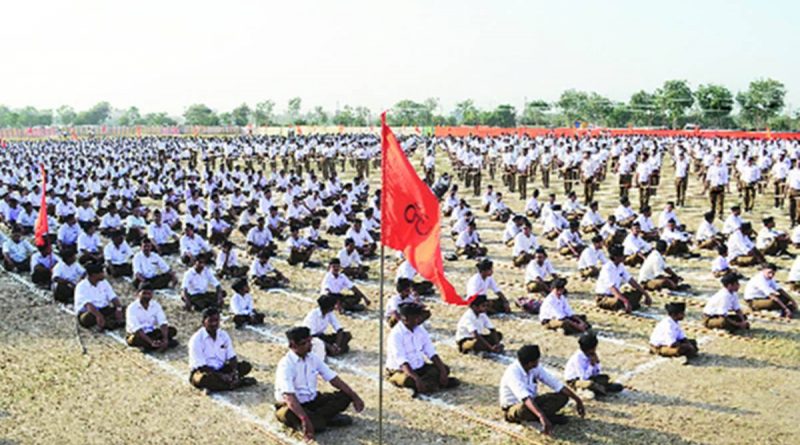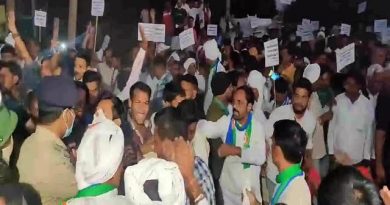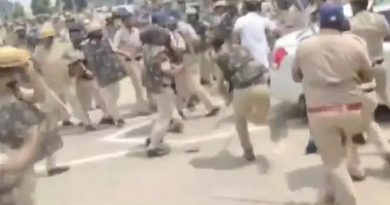| |
|---|
News Desk: In his essay on Frederick the Great, Thomas Babington Macaulay wrote: “Is it not perfectly clear that, if antiquated claims are to be set up against recent treaties and long possession, the world can never be at peace for a day? The laws of all nations have wisely established a time of limitation, after which titles, however illegitimate in their origin, cannot be questioned. It is felt by everybody that to eject a person from his estate on the ground of some injustice committed in the time of the Tudors would produce all the evils which result from arbitrary confiscation and would make all property insecure. It concerns the Commonwealth—so runs the legal maxim—that there be an end of litigation. And surely this maxim is at least equally applicable to the great commonwealth of states; for in that commonwealth litigation means the devastation of provinces, the suspension of trade and industry.” (From Lord Macaulay, Critical and Historical Essays, Longmans Green & Co., 1877, page 666.)

The recent spate of petitions explicitly seeking the demolition of the historic mosques at Mathura (Shri Krishna Janmasthan) and Gyanwapi mosque, which is next to Kashi Vishwanath at Varanasi dedicated to Shiva, were long expected. On August 23-30, 1964, Rashtriya Swayamsewak Sangh (RSS) chief M.S. Golwalkar and S.S. Apte convened a conclave in Mumbai to set up the Vishwa Hindu Parishad. As becomes a body which wants India to be a Vishwaguru, the VHP also aspired to influence the world.
A lifelong Congressman, K.M. Munshi, was present at the 1964 conclave. Jaya Chandra Wadeyar and C.P. Ramaswamy Ayyar heartily sympathised with the revanchist venture of the VHP.
The RSS floated the VHP and then controlled it. In April 1984, the VHP declared its commitment to “liberate” the Ram Temple at Ayodhya. This was a purely tactical ploy. The agenda was far wider. The VHP set up a central Marg Darshak Mandal. It drew up an 18-point code of conduct for individuals, families and “political leaders”. The section for “political leaders”’ read “Shri Rama and Shri Krishna Janamsthans, Kashi Vishwanath Mandir and all other historic temples should be restored to Hindus.” Acharya Vamdeo demanded that Delhi’s Jama Masjid should be put on this list of mosques to be demolished.
We have an authoritative account of the proceedings of the 1984 conclave. Deoki Nandan Agarwal, a former judge of the Allahabad High Court and one of the leading figures in the Ram Janmabhoomi movement, has recorded the background. The VHP owed its existence to RSS chief M.S. Golwalkar and Swami Chinmayananda’s deliberations in Mumbai on August 19, 1964. Its first session was held at the 1966 Kumbh Mela in Allahabad. Agarwal recalled: “At its session held at Vigyan Bhavan, Delhi, on 7 and 8 April 1984 the Dharma Sansad of the Vishwa Hindu Parishad gave a call for the removal of the three mosque-like structures raised by Muslim marauders after destroying the ancient Hindu temples, at Sri Rama Janmabhoomi, Ayodhya, Sri Krishna Janamsthan, Mathura, and of Kashi Vishwanath at Gyanvapi, Varanasi. The so-called Babri Masjid at Ayodhya was taken up first.”
It is thus clear beyond all doubt that the agenda of the Sangh Parivar (RSS-VHP-BJP) from the very outset was aimed at the destruction of all the three historic mosques: the Babri Masjid at Ayodhya, the masjid at Mathura and the Gyanvapi masjid at Varanasi. The latter two were not omitted. Indeed, in 1990, L.K. Advani used them as bargaining counters. If Muslims surrendered the Babri Masjid, he and the Sangh Parivar would relinquish their claims to the mosques at Mathura and Varanasi.
Never before had even pious Hindu leaders such as Lala Lajpat Rai, Bal Gangadhar Tilak and Madan Mohan Malaviya raised the demands which the Sangh Parivar did in order to mobilise the Hindu vote bank.
Having added the Babri Masjid to his “achievements”, Narendra Modi is out to arrest the decline in his popularity by using the two mosques at Mathura and Varanasi with the same tactics—use the courts. The RSS’ organ, Organiser, had a special edition on Ayodhya (January 10, 2021) which carried articles by both King Narendra Modi and his Archbishop of Canterbury, the RSS chief Mohan Bhagwat. Significantly, Kashi Vishwanath is mentioned en passant. The refrain was: “The Ram Janmabhoomi has become free from the centuries old chain of destruction and resurrection.” The proposed temple would be the “modern symbol of our culture”. Note this is the heart of the BJP’s thesis and an exposure of its aims. The construction of Shri Ram Temple is a task to unite the entire nation. “After all, Shri Ram belongs to all and lives in all,” wrote Modi.
But the RSS boss, Mohan Bhagwat, lets Modi down completely. He admits that “Shri Ram is a god for the majority of the people of Bharat, the Hindus precisely. Yet the entire movement was launched in the name of a national awakening.”
Mosque converted into temple
As for the desecration of houses of worship, it was a sordid game played by all in India for political reasons. The foremost authority on the subject is Richard Eaton, described as “the leading authority on the subject”. Hindu monarchs destroyed Buddhist temples.
As the distinguished journalist, Swaminathan S. Anklesaria Aiyar, pointed out recently:
“Let no one deny that conquerors through history looted and destroyed places of worship. Aurangzeb destroyed a temple to build the Gyanvapi mosque in Varanasi. Historians like Richard Eaton record that Hindu kings conquering other Hindu kings also looted their temples.
“Not many know that several mosques in India were converted to temples, mainly in the hate-filled rage of India’s Partition. The Jama Masjid in Sonipat, Haryana, was converted to a Durga Mandir. It has classical Muslim domes and minarets, so no Archaeological Survey inquiry is required to show that its religious character was changed.
Farrukhnagar, Haryana, had a Jama Masjid built in 1732, which was converted to a Hindu temple and gurudwara after the mass arrival of refugees from Pakistan after Partition. The building still has three typical Muslim domes and two minarets, one half destroyed. The Jama Masjid built by the Khilji dynasty in Aurangabad is now a Bharat Mata temple. The Dana Shia mosque in Hisar became a Bhagwan Danasher temple after India’s Partition riots.
“This raises an interesting question. If the courts entertain suits for the Hindu reclamation of mosques in Varanasi and other places, must they not simultaneously consider the Muslim reclamation of all the mosques converted to temples?”
Do you remember the furore which Audrey Truschke’s Aurangzeb: The Man and the Myth (a Penguin publication) created when it was published four years ago? It was not a defence of Aurangzeb, but as becomes a truly scholarly work, it was nuanced, as all objective accounts are—unlike Jadunath Sarkar’s work which she rightly calls “communal”. To their credit, all the leading English dailies of India applauded that book. Furore by ignorant bigots during Modi’s reign has deterred many a foreign scholar from visiting India again.
Temple destruction: political, not religious
Aurangzeb’s motives in temple destruction were political, not religious. This does not make them defensible; it simply puts the deed in perspective.
I make no apologies for quoting extracts in extenso. The narrative begins thus:
“It is not lawful to lay waste ancient idol temples, and it does not rest with you to prohibit ablution in a reservoir which has been customary from ancient times.” — Advice given by Muslim jurists to the future Sikander Lodi of Delhi (r. 1489-1517).
“Of the tens of thousands of Hindu and Jain temples located within Mughal domains, most, although not all, still stood at the end of Aurangzeb’s reign. Nobody knows the exact number of temples demolished or pillaged on Aurangzeb’s orders, and we never will. Richard Eaton, the leading authority on the subject puts the number of confirmed temple destructions during Aurangzeb’s rule at just over a dozen, with fewer tied to the emperor’s direct commands. Other scholars have pointed out additional temple demolitions not counted by Eaton, such as two orders to destroy the Somanatha Temple in 1659 and 1706 (the existence of a second order suggests that the first was never carried out). Aurangzeb also oversaw temple desecrations. For example, in 1645 he ordered mihrabs (prayer niches, typically located in mosques) erected in Ahmedabad’s Chintamani Parshvanath Temple, built by the Jain merchant Shantidas. Even adding in such events, however, to quote Eaton, ‘the evidence is almost always fragmentary, incomplete, or even contradictory’. Given this, there were probably more temples destroyed under Aurangzeb than we can confirm (perhaps a few dozen in total?), but here we run into a dark curtain drawn across an unknown past….
“Political events incited Aurangzeb to initiate assaults on certain Hindu temples. For example, Aurangzeb ordered Benares’s Vishvanatha Temple demolished in 1669 and Mathura’s Keshava Deva Temple brought down in 1670. In both instances, Aurangzeb sought to punish political missteps by temple associates and ensure future submission to the Mughal state.
“The idea that religious institutions could be subject to politically motivated destructions makes many modern people see red, but pre-modern Indians did not draw such a firm line between religion and politics. On the contrary, temples were widely understood—by both Hindus and Muslims—as linked with political action. The Sanskrit Brihatsamhita, written perhaps in the sixth century, warns, ‘If a Shiva linga, image, or temple breaks apart, moves, sweats, cries, speaks, or otherwise acts with no apparent cause, this warns of the destruction of the king and his territory.’ Acting on this premise that religious images held political power, Hindu kings targeted one another’s temples beginning in the seventh century, regularly looting and defiling images of Durga, Ganesha, Vishnu, and so forth. They also periodically destroyed each other’s temples. Some Hindu kings even commissioned Sanskrit poetry to celebrate and memorialise such actions. Indo-Muslim rulers, such as Aurangzeb, followed suit in considering Hindu temples legitimate targets of punitive state action.
“Aurangzeb brought the bulk of Benares’s Vishvanatha Temple down in 1669. The temple had been built during Akbar’s reign by Raja Man Singh, whose great-grandson, Jai Singh, many believed had helped Shivaji and his son Sambhaji flee from the Mughal court in 1666 (this was the same Jai Singh who had earlier led a military assault on Shivaji in Purandar). Additionally, in 1669 a rebellion broke out among Benares landlords connected to the Vishvanatha Temple, many of whom were also implicated in Shivaji’s escape.
“In 1670 Aurangzeb directed the obliteration of the Keshava Deva Temple in Mathura, built in 1618 by Bir Singh Bundela, for similarly layered political reasons. Mathura Brahmins may have assisted with Shivaji’s 1666 flight from Agra. Moreover, the Keshava Deva Temple had been patronised by Dara Shikoh, Aurangzeb’s major rival for the throne. More immediately, Jat uprisings in the region in 1669 and 1670 dealt the Mughals heavy casualties. In subsequent years Aurangzeb ordered temples demolished in Jodhpur, Khandela, and elsewhere for similar reasons. Mosques were erected on the former sites of both the Vishvanatha and Keshava Deva Temples, although they were built under different circumstances. The Gyanvapi Masjid still stands today in Benares with part of the ruined temple’s wall incorporated into the building. This reuse may have been a religiously clothed statement about the dire consequences of opposing Mughal authority. Convenience may also have dictated this recycling. While the Gyanvapi Mosque dates to Aurangzeb’s period, its patron is unknown, and the structure is not mentioned in Mughal documents.
“Aurangzeb sponsored the mosque that replaced Mathura’s Keshava Deva Temple. This may be explained by the death of Abdul Nabi Khan, a Mughal commander and a patron of the major mosque in Mathura, during the Jat rebellion. A mere eight months after Abdul Nabi’s death, which undercut the patronage of Mathura mosques, the Keshava Deva Temple lay in ruins.
“While we can reconstruct the politics of Mughal temple destruction, medieval observers rarely, if ever, outlined realpolitik arguments for attacking specific sites. Many Hindu and Jain thinkers chalked up temple demolitions to the degeneracy of the Kali Yuga, the current age. Muslim writers commonly fell back on jihad or some other religious-based concept in their narrations of temple destructions. This Islamic proclivity was perhaps rooted in the idea that Islamic law does not sanction harming religious institutions for government interests, whereas spreading Islam arguably justified such acts. This logic was culturally appropriate but it fails to provide a historically persuasive explanation for temple demolitions in Aurangzeb’s India.”
What the laws say
In 1991, Parliament enacted the Places of Worship Act, 1991. Section 3 of the Act forbids conversion of places of worship from any one religious denomination to that of another denomination.
Section 4 preserves the religious character of a place of worship as it existed on India’s Independence on August 15, 1947. Legal proceedings on such conversion pending on that date shall abate. The status quo continues.
The Act did not apply to the Babri Masjid at Ayodhya (Section 5). The Act overrides all other laws (Section7). Section 4 (3) contains some exceptions to this law. It will not apply to “any historical monument or archaeological site”. Clause (a) clearly applies to the three mosques.
But the Ancient Monument and Archaeological Sites and Remains Act of 1958 should have protected the Babri Masjid. It should have been applied to it at the very outset. It very much applies to three mosques at Mathura, Varanasi and Ayodhya. They squarely fall within clause (a) as “historical” monuments.
Clause (C) of the 1958 Act, which refers to “any dispute…. settled by the parties amongst themselves before such commencement” applies clearly to the Shahi Idgah Masjid at Mathura and Shri Krishna Janmasthan Sev Sangh at Mathura. The settlement records fully the authorisation of each side. It has stood the test of time for over half a century as an agreed Iqrarnama. Suits filed by both sides were withdrawn. The document demarcates precisely in minute detail the boundaries of the Shahi Masjid and the Krishna Janmasthan. (For the full text of the agreement see The Babri Masjid Question edited by A.G. Noorani, Tulika Books, 2003, pages 316-318, Volume 2.)
Clauses (d) and (e) of Section 4 (3) of the 1958 Act apply to the Gyanvapi Masjid at Varanasi. They read: “d) any conversion of any such place affected before such commencement (of the Act) by acquiescence.” For three centuries and more the acquiescence was palpable.
Clause (a) refers to the ban of limitation which applies very clearly.
In the Babri Masjid case, a unanimous, five-member Bench warmly lauded this Act. (M. Siddiq vs Mahant Suresh Das and others (2020 I Supreme Court Cases I at pp.247-253) In paragraph 103 at page 252 of the judgment, the court said, “The Places of Worship Act is intrinsically related to the obligations of a secular State. Only a 7-member Bench can overrule this.” But for what? To what end? The same as in the Babri Masjid case?
In that case, the Allahabad High Court flouted a unanimous ruling of the Supreme Court pronouncement in favour of the Hindu side. The Supreme Court turned a Nelson’s eye to it. It went to the very root of the case and suffices to render the Supreme Court’s ruling utterly wrong. For it was a fatal flaw.
After the demolition of the mosque, Parliament enacted the Acquisition of Certain Area at Ayodhya Act, 1993, acquiring the lands in question. Simultaneously, the President sought the Supreme Court’s advisory opinion on a question. This was on January 7, 1993, the very day the ordinance, which became an Act, was promulgated. The question referred to the court was whether a Hindu temple prior to the construction of the mosque existed. Section 4(3) of the Act aborted legal proceedings in respect of title to the acquired property. On September 14, 1994, the government stated to the court that if the question was answered in the affirmative the lands would go to the Hindus; if in the negative, “then government action will be in support of the wishes of the Muslim community”. In Ismail Faruqui C Ors. vs Union of india and Ors. (1994; 6 Supreme Court Cases 360), the court struck down Section 4(3), which aborted and extinguished legal proceedings. On this the court was unanimous.
It was divided on the issue of whether Section 4(3) was severable from the rest of the Act. Justices A.M. Ahmadi and S.P. Bharucha held it was not and struck down the Act. Chief Justice of India M.N. Venkatachaliah and Justices J.S. Verma and G.N. Ray held it was severable and upheld the rest of the Act. All five declined to answer the President’s question.
Justice J.S. Verma’s opinion is relevant: “The rival claims to the disputed area which were to be adjudicated in the pending suits can no longer be determined therein as a result of the abatement of the suits. This also results in extinction of the several defences raised by the Muslim community, including that of adverse possession of the disputed area for over 400 years since the construction of adhered the mosque there in 1528 A.D. by Mir Baqi. Ostensibly, the alternative dispute resolution mechanism adopted is that of a simultaneous reference made the same day under Article 143(1) of the Constitution to this court for decision of the question referred. It is clear from the issues framed in those suits that the core question for determination in the suits is not covered by the reference made, and it also does not include therein the defences raised by the Muslim community. It is also clear that the answer to the question referred, whatever it may be, will not lead to the answer of the core question for determination in pending suits and it will not, by itself, resolve the long-standing dispute relating to the disputed area. Reference made under Article 143(1) cannot, therefore, be treated as an effective alternative dispute-resolution mechanism in substitution of the pending suits which are abated by Section 4(3) of the Act.”
Yet on October 23, 2002, the Allahabad High Court issued directions to the Archaeological Survey of India (ASI) to have the site surveyed by Ground Penetrating Technology or Radiology (GPR), whose report on February 17, 2003, indicated anomalies. On March 5, 2003, the court directed the ASI to excavate the site.
In effect, the query in the President’s Reference was brought in by the back door. The President’s question rejected by the Supreme Court read: “Whether a Hindu temple or any Hindu religious structure existed prior to the construction of the Ram Janmabhoomi-Babri Masjid… in the area on which the structure stood. The High Court ordered the ASI to answer this very question in these terms:
“Whether there was any temple/structure which was demolished and a mosque was constructed on the disputed site?” On that single ground of defiance alone, the High Court’s judgments invited a clear rejection by the Supreme Court. That was not done.
Has such excavation been undertaken ever before in any civil suit on title? This time it was, and the Supreme Court’s judgment has not a word of disapproval for this breach of its own ruling which was unanimous.
Indeed, at the very outset of the case the Supreme Court ought to have set aside the Allahabad High Court judgment on the excavation and its illegitimate fruits and proceeded to try the rest of the issues. Its judgment reveals why it did not follow this fair course.




